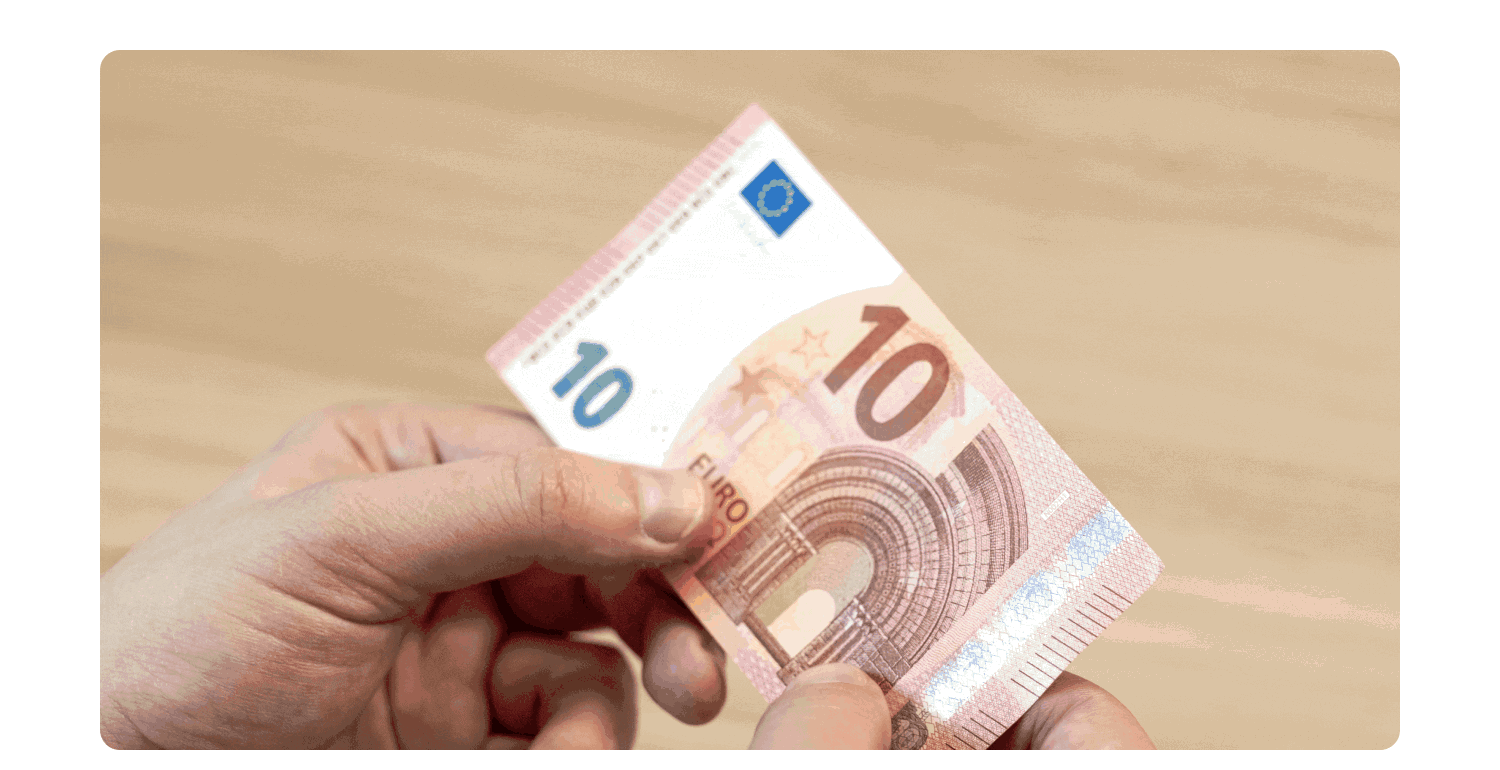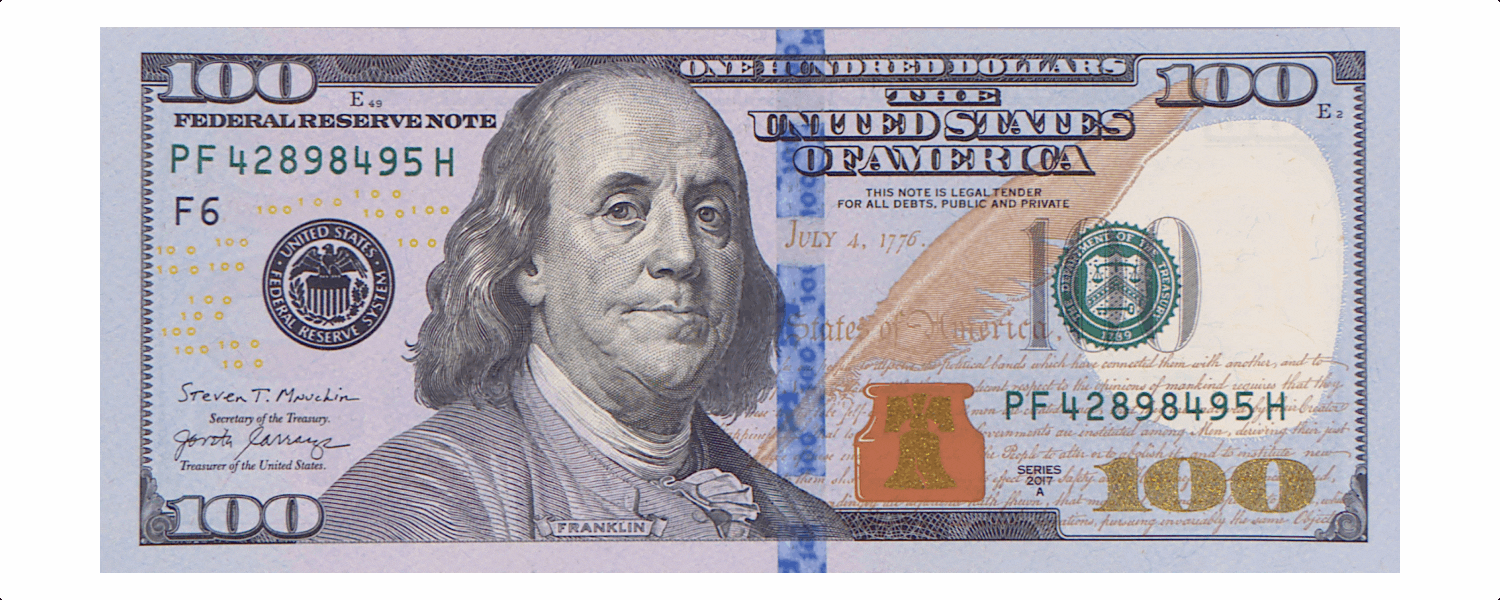As a recent Statista report finds, the global economy is becoming more cashless, with an increase in the volume of digital transactions from $311.1 billion in 2013 to $2,297 billion in 2027.
But cash payments still have many advocates represented by governments and consumer groups. Additionally, despite the decline in cash usage, the number of banknotes in economies is increasing. For instance, according to European Central Bank (ECB) statistics, in the EU, the quantity of currency in circulation continues to grow, with 29.8 billion notes and coins as of December 2023.
Seemingly, the ongoing digitalization of the global economy may lead to a decrease in the number of detected counterfeit banknotes.
However, it should be taken into account that cash remains a considerable asset of the underground economy, where fake banknotes are sometimes used for transactions.
In this blog post, we'll be breaking down the major components of the systems that help identify fake banknotes at different levels. Furthermore, this article offers a range of practical tools that can effectively combat the scourge of money counterfeiting.
Get posts like this in your inbox with the bi-weekly Regula Blog Digest!
Why is money counterfeiting still a threat?
On the one hand, financial regulatory authorities from regions with advanced economies declare that the number of counterfeit banknotes withdrawn from circulation remains low. For example, the ECB reports that 467,000 counterfeit euro notes were withdrawn from circulation in 2023 (16 counterfeits per one million genuine notes in circulation). Moreover, most counterfeits are easy to detect since they are low quality and have poor imitations of security features.
In single countries with a high prosperity index, the volume of counterfeits is also small. For instance, based on the Bank of England's official data, about 73,000 counterfeits were discovered in the first half of 2023. To get a better idea of this figure, it means that less than 1 in 30,000 banknotes entering circulation is a fake (less than 0.0031% of all notes). For comparison, in 2013, 705,000 fake notes were detected by British banks.
Counterfeit money is also detected in countries with developing economies. But here, the numbers are still comparable. For instance, as the Reserve Bank of India reports, there were 225,769 counterfeits detected at banks across the country from March 2022-April 2023.
However, the numbers above represent only central banks' findings. Usually, law enforcement agencies generate reports on money counterfeiting as well; however, they are not always available to the public. But online sources confirm that the number of counterfeits found is minimal. As a quick example, official Royal Canadian Mounted Police statistics show that 53,630 counterfeit Canadian banknotes were seized by law enforcement in 2022, and 29,918 the year before.
Meanwhile, these numbers show that money counterfeiting continues to pose a significant problem globally.
Note that the international popularity of a particular currency, such as the U.S. dollar, makes it a target for counterfeiters from other countries. According to a Federal Reserve Report on the Use and Counterfeiting of United States Currency Abroad (2006), a significant portion of intercepted counterfeit dollar packages bound for the US and Europe originated in Latin America, primarily in Colombia.
Given the nature of the use and movement of international currencies in the form of cash, fake banknotes imported from regions with significant counterfeiting activity may pass into banks, shops, and currency exchange desks worldwide.
Counterfeit money detection levels
In order to ensure adequate protection against counterfeiters, it is crucial to determine where, how, by whom, and with what means counterfeit money can be detected.
The concerns raised above underscore the necessity for a comprehensive approach to tackling money counterfeiting. This system may include the following levels:
Public
Business
Expert

As you can see, the system is quite complex and includes many actors who should be equipped with knowledge and special tools. As you transition between levels, from public to business to expert, objectives and contexts change. While regular customers likely deal with a small amount of cash in their daily lives, employees at the business level have to handle a lot more banknotes during their shifts.
For example, one of the tasks assigned to experts is to detect counterfeit notes and describe their characteristics. Primarily, this information helps law enforcement agencies combat money counterfeiting. Moreover, these discoveries form the foundation of training programs for cash-handling personnel, aiding in the disclosure of counterfeit notes at the business level.
Let’s take a closer look at each level in detail.
Public level: Consumers who pay with cash
Despite cash transactions being on the decline, cash remains a common form of money for many people. As a result, consumers may gullibly accept counterfeits if they’re not informed of the threat.
Governments provide educational resources and run awareness campaigns for different groups, from children to elders, to encourage people using cash to be on alert. Typically, they include digital materials—articles, videos, brochures, etc.—which are available on national banks' websites. Some countries create dedicated online media for citizens, e.g., the US Currency Education Program. Commercial banks provide this information to their clients both online and on-site. Usually, these guides include contacts of authorities to whom an individual can report a counterfeit case if it occurs.
Such guides offer a “feel-look-tilt” test which can be used to examine any banknote as a counterfeit detection technique.
The “feel-look-tilt” test: How to detect counterfeit banknotes in three steps
1. Feel. Printed on security paper containing cotton and linen fibers, authentic banknotes feel crisp and thick. Additionally, they have an embossed texture thanks to special printing processes.
2. Look. When looking at the notes against the light, the watermarks, the security threads, and the secure windows become visible.
3. Tilt. Some details on notes, such as denominations, reveal optically variable characteristics when one observes the notes at different angles. This method is also helpful for hologram examination.

The “feel-look-tilt” method implies a series of quick checks with the naked eye.
Business level: Trained employees in the banking, retail, and service sectors who handle large volumes of cash
A massive amount of cash is handled at the business level, and this cash flow may include both domestic and foreign currencies.
That’s why there are more requirements for employees handling cash. They must commit to cash-handling policies and procedures. Counterfeit money detection is usually a mandatory part of the process. In many cases, these specialists must also be certified under the required training programs.
At Regula, we develop a wide range of money authentication devices for banknote verification in business. Regula 4103.01 is one of the tools that work best for express authenticity verification. With the necessary set of illuminators, the device enables you to examine the banknotes’ security features, including those with magnetic properties, in different light sources, and measure the banknote area.

Regula 4103.01 works best for express banknote authenticity verification.
Additionally, Regula offers consulting services on verification of banknote authenticity for bank tellers, cashiers, and other cash-related employees from different industries.
Expert level: Certified forensic specialists who examine questioned and counterfeit banknotes
Finally, there is the expert level: this is where forensic laboratories come into play. Counterfeit examination (not only money but also pieces of art, wills, bank checks, etc.) is a part of their daily routine. These laboratories are staffed by highly skilled professionals who learned the subject to a T.
Forensic specialists usually get banknote verification requests from law enforcement agencies that discover counterfeit money. With the collaboration of experts from diverse fields, including physics and chemistry, they investigate techniques for replicating security features, printing and producing fake banknotes, and the materials employed—inks, substrates, etc. They also maintain databases, enabling them to detect if counterfeit notes come from one place. That helps authorities find and stop those sources.
Naturally, this all demands special training and high qualifications, and entails accountability for the approaches taken during the examination. Forensic specialists also have periodic training on security features and banknote authentication provided by national banks, police organizations, anti-counterfeiting authorities, etc., to master their knowledge of counterfeit money detection.
Given their responsibilities, forensic experts require cutting-edge equipment with all the necessary functionalities to carry out these examinations.
A professional analysis involves comparing a suspicious banknote, including its security features, with a banknote reference sample containing detailed images and descriptions of the security features. Regula has the largest such database in the world; it is available on-site and online, and it complements our wide range of forensic devices.
Information Reference System
To detect counterfeit money, even experienced professionals need an extensive knowledge base. Regula’s Information Reference System (IRS) now consists of over 155,200 images of banknotes and coins, security features, and printing techniques, including detailed descriptions. This number continues to increase as the database receives weekly updates. A total of 201 currencies are currently in the database, organized by country and series. The IRS is also seamlessly integrated with Regula software for operating examination devices.
Using such an extensive database, experts can evaluate every detail of a banknote to detect any inconsistencies. Additionally, devices equipped with magnifiers, comparators, microscopes, and spectrometers can help with the process.

Regula 1004М.

A dual-video spectral comparator Regula 4308.
Regula engineers have designed devices with all of these features, covering a wide range of tasks demanded by forensic experts: from magnifiers, such as Regula 1004М, to video-spectral comparators, such as Regula 4308.


Forensic experts examine all the details of a banknote under different light sources, for instance, under IR 870 nm and UV 365 nm (see the gif animation), and with the help of magnifying devices.
Based on the results of the examination, specialists compile a report providing evidence determining whether the banknote is authentic or fake, and pinpointing the primary origin of a series of fake notes. This capability is integrated into Regula devices.
All our devices for advanced examination are powered by Regula Forensic Studio. With a wide range of examination, comparison, and processing functions, the software facilitates both banknote authenticity checks and report generation. The reports may include text and graphic data, such as image capture conditions, photos, and charts, presenting all the essential details.
Also, advanced training is provided by Regula for authenticating documents and banknotes.
If you are interested in learning more about security features in banknotes, then definitely check up for A Common Thread Is a Security Thread: Exploring Their Variety in Banknotes
Regula forensic solutions: A comprehensive approach rooted in decades of experience
Effectively tackling money counterfeiting demands continuously researching and updating a multifaceted array of security measures, regulations, equipment, and information systems.
For over 30 years, Regula has consistently adhered to this approach while developing our software and hardware solutions—from conception to realization. Our experts collaborate with international forensic departments and organizations, such as INTERPOL, to stay at the forefront of forensic advancements, and to exchange expertise in counterfeit money detection.
While building devices for express and advanced authenticity checks, we also provide an IRS and counterfeit money detection training for businesses and experts. This enables us to offer complete solutions for companies and law enforcement agencies that embrace their needs and comply with established procedures.
Book a call with one of our representatives to learn more about your possibilities.





